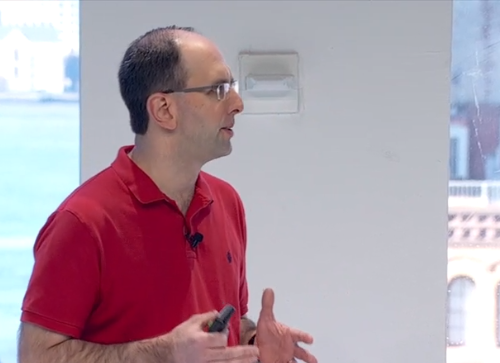Microsoft doubles down on open source and analytics for developers
Microsoft’s embrace of open source software is about to get a lot bigger as the company is rolling out several new tools and services designed to help developers create applications designed for the cloud, as well as highly specialised apps for artificial intelligence (AI) and the internet of things (IoT), reports Enterprise Cloud News (Banking Technology’s sister publication).
At its Connect developer show in New York this week, Microsoft’s Scott Guthrie, EVP of its cloud and enterprise group, detailed a series of developer tools designed to take advantage of the cloud, as well as computing on the edge of the network.
The tech titan is also looking to offer more data analytics tools to help measure the performance of these applications as they relate to the enterprise.
“We live in an interconnected world today, where applications and solutions are built to take advantage of intelligent edge devices, such as smartphones, IoT devices and client computers, and where the apps that we are building are running increasingly on top of intelligence clouds,” Guthrie notes. “It’s really never been a better time to be a developer.”
The most significant announcement from Connect this week is the preview of Azure Databricks, which Microsoft built with assistance from some of the founders of Apache Spark, the open source framework for analysing data sets across clustered environments. These are also some of the same engineers behind Databricks.
The preview combines the Databricks big data analytics product with Microsoft’s Azure public cloud, as well as integration with other tools, including SQL Data Warehouse, Azure Storage, Azure Cosmos DB and Power BI. This will allow customers to spin up their analytics platforms with a single click, while providing scaling and better workflow.
Additionally, users will have access to the Databricks notebook feature for helping to build models, as well as monitoring the application development. By using Azure, Microsoft also added an extra layer of security for the data that is being analysed.
The other significant piece of news from the event involves databases, specifically Microsoft’s Azure Cosmos DB, the company’s globally Distributed Database-as-a-Service (DBaaS) offering, which was announced earlier this year.
Microsoft announced that it would start a preview of what it calls Azure Cosmos DB with Apache Cassandra API. Essentially, it delivers Cassandra as-a-service, along with SDKs and other tools, through the Azure Cosmos DB. Redmond also announced multi-region support for Azure Cosmos DB, bringing the database and its capabilities closer to the applications it serves.
Not to be outdone, Google announced new updates to its DBaaS, Cloud Spanner, including multi-regional support earlier this week.
In keeping with the open source theme, Microsoft also announced that it would join the MariaDB Foundation to help develop that database. The company is also offering a preview of Azure Database for MariaDB, which provides managed services for the database.
The third significant announcement is the public preview of Azure IoT Edge, which allows developers to deploy intelligence directly into connected devices through containers in the cloud.
Microsoft had first detailed Azure IoT Edge at its Build show, but this is the first public preview, and it now integrates with Azure Machine Learning, Azure Functions and Azure Stream Analytics.
To make it available to a wide array of developers, Azure IoT Edge can also work with container-based workloads that use C, Java, .NET, Node.js and Python.











































